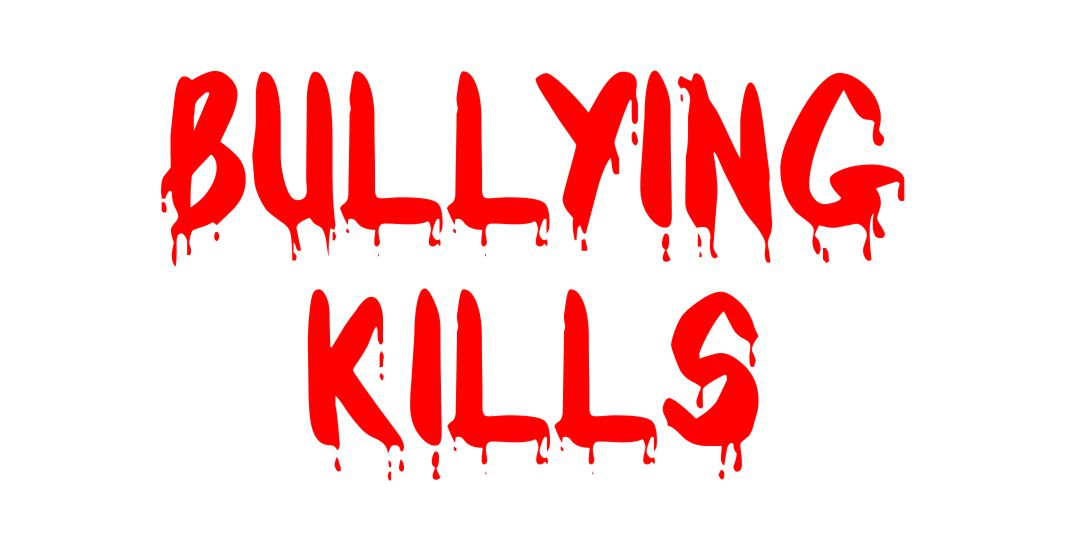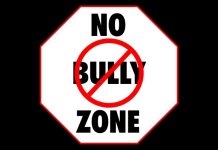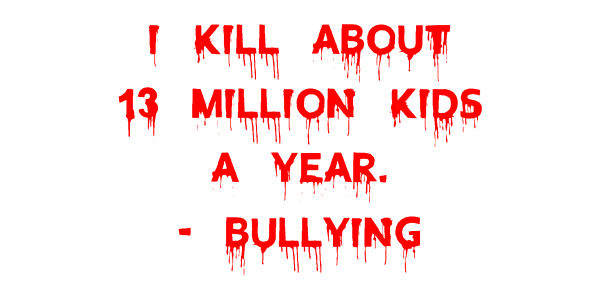 Building Healthier Children
Building Healthier Children
Many parents, teachers, counselors, and martial arts leaders have long believed that building high self-esteem in every child early in life is crucial to preventing the creation of both the bullied and bullies. While not all authorities agree that self-esteem is the keystone of the complex problem of bullying, it must be recognized that not only the bullied but also the bullies need help to prevent and to stop these unhealthy and cyclical associations.
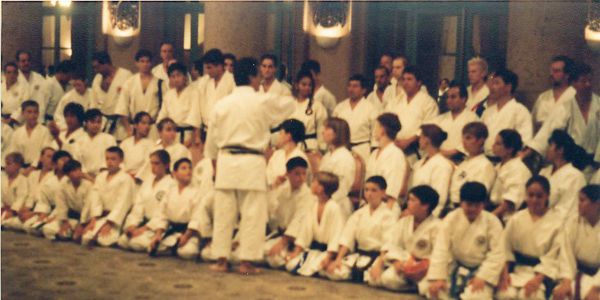
“Among the vast wasteland of the seductions and sidetracks of society are scattered a few treasures that can better humankind. The practice of martial arts is one of those treasures.” — ldk, Change Your Life with Martial Arts
Supplying Important Basics for a Smart Start
In addition to the love, attention, and care that parents, grandparents, educators, martial arts masters, and other caring adults can give children, giving them the opportunity to study and practice the many important facets of the martial arts including self-defense can be a viable component to help prevent the problem of bullying. Parents and others also can create an atmosphere of acknowledgement, dignity, and respect for youngsters and make it a goal to keep that atmosphere healthy—the first step in creating high self-esteem.
“Karate begins and ends with courtesy.” — Gichin Funakoshi, Karate-Dõ: My Way of Life
John Panepinto, MEd, LPC, CHT, of Cary, NC, USA, author of Balance Points for Complex Times, reiterates that “The martial arts fit perfectly as part of the solution to build high self-esteem in youth today.” One might even go as far as to suggest that both potential targets of bullies and bullies themselves could benefit from serious study of the martial arts.
“Martial arts, well taught, can take students into a cosmos like none they have known before.” — ldk, Change Your Life with Martial Arts
Finding the Noblest Leaders
Under the noblest leadership, the martial arts can give youngsters a worthwhile goal, bring balance to their lives, and build body, mind, and spirit. Children who have the opportunity to participate in the martial arts learn incrementally, recognize their own achievements, and realize that they still must strive to reach their next level. Used well, this self-regulating process creates humility, not arrogance, for students realize there always is more to learn and to achieve. In the best sense of the martial arts, participants can use their practice to measure their own day-to-day self-mastery.
It is understandable that working long and hard to conquer the defensive moves found in kata increase brain power, foster attention to detail, and enhance concentration while strengthening independence and self-reliance. Using these moves in kumite furthers fighting skills. A quiet awareness of progress encourages students to persevere.
Students are supremely impressed when they see their strong teachers vigorously working out only moments before teaching class. Students are propelled and motivated even further when they observe their leaders, who are their best models, participating in competitions. Indeed, when students see their dedicated leaders continuing to compete, too, it boosts their motivation to pursue the martial arts to become their absolute best.
“In a world fraught with seemingly irreconcilable differences, belligerence, aggression, and ignorance of cultural, philosophical, and spiritual differences among different peoples, you may be nurtured to find the martial arts.” — ldk, Change your Life with Martial Arts
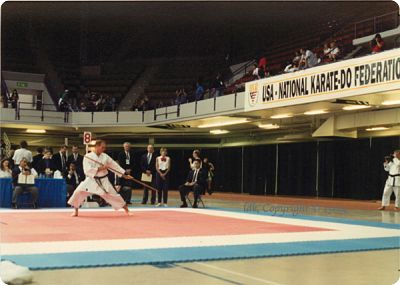
Interviewing Instructors and Observing Martial Arts Classes
While Brian Seraiah Wood, NSCA-CSCS & CPT, international instructor and master trainer, currently based in Denver, CO, USA, concurs with Panepinto that martial arts can be instrumental in helping to prevent or resolve the problem of bullying, Wood, nevertheless, feels compelled to warn parents to look closely at the goals of the martial arts systems under consideration for their children. He says to talk with the parents of students enrolled in the school to get a fuller perspective on the philosophy and mission of the school.
Many teachers graciously invite parents and children interested in studying the martial arts to visit their schools to observe their students in action. Parents, who may wish to study, as well as their children who are hoping to begin training, can learn a great deal by watching the interaction of the students with their dedicated leaders to help them decide if their studio is right for them.
Wood goes on to say that the practice of martial arts can help students to gain greater confidence, higher self-esteem, and a fuller sense of responsibility; and the workouts can boost flexibility, stamina, coordination, and balance. He emphasizes the importance of enrolling in a martial arts progam that specifically trains students in self-defense because if the students are not trained in self-defense and they are challenged on the street, both the students and their parents may be disappointed.
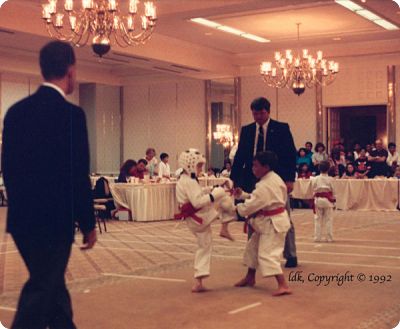
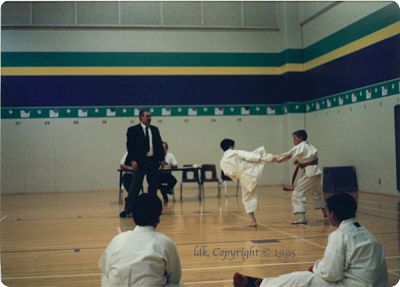
Identifying Schools Specializing in Self-Defense
It is of utmost importance to learn the true focus of the particular martial arts school that you pursue. Find out if the school truly teaches self-defense that can help a bullied child overcome a bully if or when the bully decides to go beyond teasing, harassing, goading, and bull-baiting. Practicing kumite on a regular basis can help to prepare students to protect themselves.
Enumerating Strategies to Help the Bullied
Teaching useful strategies to empower those who are being bullied helps them be able to handle trying situations. First, Panepinto stresses not to abandon or blame the bullied person. Instead, explain to them why bullies abuse power. Second, he says an obvious suggestion is to show the persons being bullied the value of steering clear of situations that make them vulnerable.
Panepinto also says that “For older kids who have the capacity, teach them to negotiate a turnaround, such as: ‘If we can’t handle this, then you’re telling me that we need the help of an adult.’ This approach places some of the onus on the bully.” Standing up to some bullies in that way can be helpful. Jerry Beasley, EdD, Professor of Exercise, Sport, and Health Education at Radford University, Radford, VA, USA, adds, “The person who does not cry, run away, or remain silent produces insufficient rewards for the bully.”
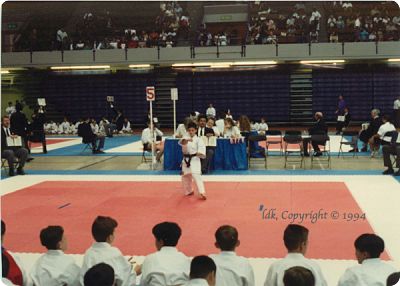
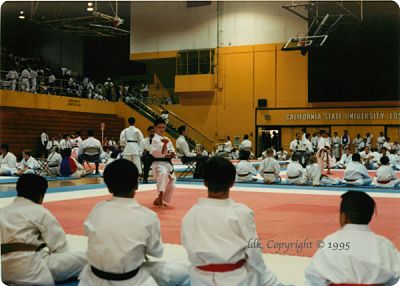
In Karate in Action, Masatoshi Nakayama explains that kata teaches the self-defense moves that can be used automatically in an attack. Working long and hard to conquer kata increases brain power, fosters attention to detail, and enhances concentration while strengthening independence and self-reliance.
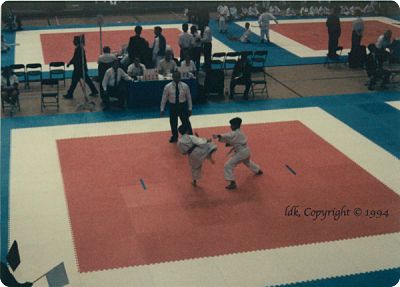
Empowering Students to Recognize Their Inner Strengths
Wood says that by helping students recognize their own self-worth, talents, and skills makes it possible for them to believe in themselves. The more they become aware of their inner strengths, the greater their self-image. He explains that empowering students to build stronger bodies, better posture, and more resilient minds can enable them to exude a quiet confidence that repels would-be bullies. He reiterates, “Building body, mind, and spirit can help to insulate the bullied person from the bully.”
Modeling Respect and Honest Communication
When students have the opportunity to see one or both of their parents training in the martial arts, it empowers them to persevere in their own training and helps to instill in them the desire to be their best.
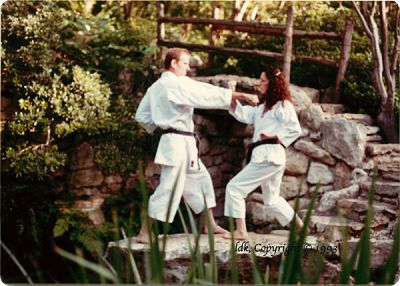
Empowering Young Learners by Listening to Their Ideas
When parents model respect for themselves and show honest communication about their own feelings, it helps children do the same. Letting youngsters know that it is okay sometimes to feel sad or to feel anger helps them to feel supported when those feelings arise. Helping children to find appropriate and positive outlets for their feelings further supports good health and is of supreme importance. When parents look their youngsters in the eyes and listen fully to them, their attention helps children feel acknowledged. In turn, the youngsters learn to listen to others, recognize other viewpoints, negotiate, and problem solve.
Involving Students in Formulating Rules
Another way that parents help to build high self-esteem is to give fair and consistent discipline based on a limited number of crucial and meaningful rules for safety and to get along in society—especially if parents involve the youngsters in formulating the rules so that youngsters can feel they have some control over their own lives. Thoughtful discipline teaches cause and effect, and children learn to make wise decisions. It is useful to help youngsters know that even the best plans and good decisions do not always bring what one wishes. When parents help youngsters determine what went wrong—without dwelling on it—children can learn to make adjustments to improve the outcome the next time.
“Our current society works in many ways to lead us astray, but the path of mastery is always there, waiting for us.” — George Leonard, Mastery: The Keys to Success and Long-Term Fulfillment
Helping a Martial Artist Become His or Her Own Best Friend
When parents give responsibility for achievable tasks appropriate to youngsters’ ages and skills it builds a strong learning foundation. Achieving tasks incrementally fosters self-confidence, empowers youngsters, and gives them a good sense of themselves for a job well done. Helping youngsters to explore the world of worthwhile, positive activities—sports, science, music, art, and literature, just to name a few—to find what they love and can do best helps to create a good self-image. Helping youngsters to recognize their strong and weak points without imposing on them an inordinate obsession for perfection helps them to set achievable goals and to build high self-esteem. Helping youngsters to avoid negative self-talk teaches them to be their own best friend. The more pre-teens can replace negative thoughts with positive, self-affirming thoughts the moment negative thoughts pop into their minds the healthier, happier, and more confident they can be.
Fostering a Sense of Worthiness
In addition to helping youngsters experience their own feeling of achievement for praiseworthy accomplishments, when parents, grandparents, and teachers use every appropriate opportunity to give children genuine recognition, it supports them even further, nurtures a good self-image and bolsters self-confidence.
If all children could be helped to feel a keen sense of worthiness, respect for themselves and respect for others, then perhaps such an environment could help to prevent bullying altogether, for neither bullies nor the bullied would be created. Being totally antithetical to bullying, the martial arts can help.
“Karate ni sente nashi” — “There is no first attack.” All kata open with a block, a defensive move, not an offensive action.— Nakayama Mashatoshi, Karate in Action: Kata & Self-Defense
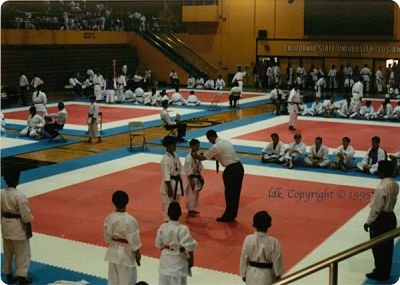
“When one knows what is expected, holds a meritorious goal, and sets out to achieve that goal in an environment of discipline, direction, and devotion to duty, achievement, excellence, and honor follow as a natural reward.” — ldk, Change Your Life with Martial Arts
Building Confidence and Powerful Relationships to Prevent Bullying
Beasley maintains that “Martial arts training, when supervised by a caring professional, can build self-esteem and an improved self-image.” He points out that achieving rank in martial arts is a demonstration of the ability to complete goals. He also shares that “the MA-trained child has the opportunity to build both short-term and long-lasting relationships, role model seniors, and observe right behaviors for conflict resolution.” He concludes that the confident child with support groups overcomes the feeling of powerlessness and presents an unlikely choice to the bully.
Preventing or Stopping Unhealthy and Cyclical Associations
Admitting That Bullies Need Help, Too
Some people gasp and shake their heads at the mere mention that bullies need help; however, it must be understood that they need genuine guidance, positive attention, and constructive outlets for expression. It very well may be that they have been bullied. So, indeed, bullies must not merely be bullied in turn. Instead, their emotional issues and their need to suppress or control others must be addressed and channeled appropriately.
“When we establish an atmosphere of mutual respect in our families, we give our kids a model of how to relate to others. Respect in the family translates to respect in the world.” — Gary D. McKay & Daniel Eckstein, Raising Respectful Kids in a Rude World
Recognizing Some Possible Causes of Bullying
Being Suppressed and Missing Out on Being Validated
Panepinto explains that bullies usually lack both empathy and a sense of competence. Typically, they do not get positive attention at home. In his more than 20 years of professional counseling practice, he has “yet to meet a bully who has not been the target of the negligent use of power.” Not only have they sometimes been suppressed themselves, but also because of such suppression they often lack confidence. Worse still, they lack support groups with whom to vent their problems. Far from brave, they act cowardly and “usually act in places where they can’t get caught.”
Duplicating What They Have Experienced
Beasley adds that “Bullies typically gain rewards by using physical or psychological strength to cause a victim to react to them in a submissive manner.” Sometimes such behavior may be a duplication of what they have experienced or what has been modeled for them. Gossiping, spreading rumors, teasing, physical violence or threatening physical violence, and excluding or socially isolating the victim comprise their arsenal. “They interpret their control and manipulation as rewards to continue their antisocial behavior.” So, what are some solutions to this dilemma?
Dissolving the Need to Bully
Noting the Importance of Healthier Habits and Good Nutrition
Gichin Funakoshi (11.10.1868—04.26.1967), the founder of Shotokan Karate-Dõ who is acknowledged as the Father of Modern Karate, and Masutatsu Oyama (07.27.1923—04.26.1994), the founder of Kaikan Kyokushin, taught not only the necessity of ample excellent quality sleep and “prudent care of the mind to stay free of mental upset as much as possible,” but also they maintained that students should eat “natural, fresh produce, for fresh fruits and vegetables build strong bodies.” Supplying luscious garden fresh organic vegetables and orchard fresh organic fruits instead of nutrient deficient, dead processed fare may play a role in preventing or neutralizing aberrant behavior in individuals and improving how they feel and how they see themselves and their place among their peers.
“… Choosing a wide variety of unprocessed foods and fresh fruits and vegetables in all kinds of colors will help you get the micro- and macronutrients you need.” — Karen Frazier, Nutrition Facts: The Truth about Food
In addition, Funakoshi and Oyama encouraged students to consume their food at regular intervals to maintain their energy reserves, eat in moderation, and never eat in excess. Grand Masters knew the extraordinary benefits of nutritious foods for strong, lean bodies, clear minds, healthy emotions, and strong spirits.
Noting the Importance of Foods Free of Artificial Ingredients
Long ago, Funakoshi and Oyama also gave the astute advice to avoid artificial ingredients. Avoiding synthetic colorings, dyes, and preservatives, and eliminating high fructose corn syrup and restricting sugar can support good health today. Also avoiding—as much as possible—artificial ingredients such as aspartame and MSG (monosodium glutamate), and avoiding heavy metals such as aluminum, arsenic, cadmium, chromium, fluoride, lead, and mercury, disinfectants such as chlorine, and other damaging chemicals such as formaldehyde, parabens, phthalates, dioxins, glyphosate, and PCBs (polychlorinated biphenyls), to name a few, wherever they are used in our environment can help keep students much brighter, much healthier, and much stronger today.

Recognizing That Nutrition Influences Behavior
What Funakoshi and Oyama knew about fostering strong mental and emotional well-being and furnishing superior nutrition for excellent overall health has been overridden in much of society today. Instead, food producers and suppliers profiting from highly processed, non-nutritive, and additive-laden foods have swarmed our society undermining the health not only of children but also adults. What Funakoshi and Oyama knew boldly from common sense, practice, and observation, today’s studies assessing the impact of nutrition on human behavior often are replete with hesitant language because of the persistent need for researchers to protect their reputations when reporting their data in the event that their results might not be able to be replicated by others in their field.
Jianghou Liu of the School of Nursing and Adrian Raine of the Department of Criminology and Psychology at the University of Pennsylvania, Philadlephia, PA, USA, for example, among their key messages in “Nutritional status and social behavior in preschool children: the mediating effects of neurocognitive functioning” state that their “findings suggest [Emphasis mine] a possible mechanism whereby poor nutrition leads to impaired social behavior,” and their study “suggests [Emphasis mine] that having a good nutritional status may promote positive social behavior in children.”
Defending against Illness and Disease
In Karate-Dõ: My Way of Life, Funakoshi explains that “Karate-dõ is not merely a sport that teaches how to strike and kick; it is also a defense against illness and disease.” Looking back over the nine decades of his life, this stellar model writes, “Thanks to my devotion to Karate-dõ I have never once had to consult a physician. I have never in my life taken any medicine: no pills, no elixirs, not even a single injection.” He reasons that his body had been so “well trained that it repels all sickness and disease.”
Attributing Longevity and Excellent Health to Martial Arts
Funakoshi attributed his longevity and excellent health to the martial arts. He came into the world as a preemie, had compromised health from the start, and was expected to live no more than three years. Fortunately for Funakoshi, around age 11, his grandparents arranged for his study of the martial arts even though their government had banned its practice. By around age 13, his health had improved remarkably from his diligent daily secret training. Similarly, Funakoshi’s teachers Yasutsune Itosu (1831—1916) and Azato (1828—1906) both had been sickly youngsters, but the martial arts changed their health for the better and carried them into their 80’s. These three can greatly inspire students.
Getting Mentors for Bullies and Teaching Them Empathy
Panepinto advises getting the bullies mentors and teaching bullies empathy by helping them relate to their own experiences of feeling fearful or threatened. He also finds it useful to help them discover their areas of competence, a meaningful way to meet their need to feel powerful, and use that power positively. He maintains that “Merely doling out consequences will not work. Until bullies see and experience positive uses of power and feel some competence, they will continue bullying. Their experiences with logical consequences are all fear-based and are not generative for success.”
Dealing with Bullying
Fighting Back
Panepinto, Wood, and Beasley emphasize that a person with a healthy self-esteem does not need to control others. Instead, one with a healthy self-esteem is disciplined and self-controlled. If bullying has begun, though, Beasley says that fighting back means telling others who can help and using support groups to limit the bully. Beasley says, “In lesser schools, bullies are free to roam in silent fashion choosing victims without fear of punishment.” Wood even describes the public schools as “prisons for many kids,” and says that “fear can control the masses.”
Being Bold Enough to Turn the Problem over to Adults
Recognizing the Power of Positive Action
An astute student who believes that handing the dilemma of bullying over to adults is a smart move is Jake Marcionette, who, at age 12, wrote Just Jake #1, the first book in his Just Jake series. This New York Times bestselling author doesn’t worry that some kids think it is “uncool” to get “the principal and teachers involved.” In an interview with Rocco Staino for School Library Journal, Marcionette said that he “didn’t think twice about going to [his] principal when he was bullied.” As a result, Jake enjoys “the relief of not having to worry” about bullies. Jake wishes that “more kids would tell an adult.” Jake, then, is a lucky kid who is afforded protection in what Beasley refers to as “better schools” where students, teachers, and administrators work together to stop bullying.
Connecting a Few Dots to Help Prevent Bullying
Noting the Irony of the Situation
Panepinto notes the irony that building in bullies a better self-esteem is crucial to dissolving the need to bully. Wood says, “We as teachers and guides must do our best to cultivate self-esteem, opposite perspective-awareness, and neutral compassion in the minds and hearts of today’s youth. Sadly, we cannot change the world, but we can do our part to focus on individuals, schools, and communities, and then by intention radiate our good energy outward.” Beasley concludes that the confident child with support groups overcomes the feeling of powerlessness and presents an unlikely choice to the bully. At the same time, remember this—helping potential bullies to build high self-esteem in an atmosphere where respect is expected and modeled and helping them to find positive outlets of self-expression early where they can feel worthy may deter the need to bully.
Recognizing the Martial Arts as a Vital Part of the Solution
Again and again, it seems obvious that given the opportunity to study the martial arts under the noblest leaders is one grand solution to help conquer the problem of bullying. The lifeblood of the martial arts, after all, is about unifying body, mind, and spirit and learning self-control, focusing on self-improvement, and striving to be better today than yesterday. When students can attune themselves to such a worthy challenge and work to achieve it, their purpose can manifest for their own betterment and even model for those around them. Having such a positive goal and outlook can help put those who might be bullied and would-be bullies on a better path, as well. With receptive students, a clear purpose, and devoted martial arts experts to show the way, bullying can be conquered. To reinforce that idea, think a bit about Funakoshi’s urging that the martial arts be interwoven into daily life activities, for the study and practice can be embraced and used in all dimensions of one’s daily life. Funakoshi concludes that “when students make their spirits and minds rugged through serious sparring with a ‘never-say-die attitude,’ they can overcome any challenge.”
Sources
Beasley, Jerry, EdD, Professor of Exercise, Sport and Health Education at Radford University, Radford, VA, USA. Personal communication, 16 May 2015.
Davis-Kyle, Linda, MA, Change Your Life with Martial Arts: Your essential introduction to the Martial Arts, Austin: Blueberry Press, 2002, pp. 47, 70, 80, 101, 92-93, 98.
Frazier, Karen. Nutrition Facts: The Truth about Food. Berkeley: Rockridge Press, 2015, p. 124.
Funakoshi, Gichin. Karate-Dõ Kyohan: The Master Text. Trans. Tsutomu Ohshimu. Tokyo: Kodansha International, 1975, p. 12.
Funakoshi, Gichin. Karate-Dõ: My Way of Life. Tokyo: Kodansha International, 1973, pp. xiii, xiv, 2, 32, 102.
Funakoshi, Gichin. Karate-Dõ Nyumon. Trans. John Teramoto. Tokyo: Kodansha International, 1988, p. 47.
Leonard, George. Mastery: The Keys to Success and Long-Term Fulfillment. New York: Plume, 1992, p. 4.
Liu, Jianghong and Adrian Raine. “Nutritional status and social behavior in preschool children: the mediating effects of neurocognitive functioning.” Maternal & Child Nutrition, DOI:10.1111/mcn.12321. Published online 1 May 2016. Accessed 28 June 2016
McKay, Gary D. & Daniel Eckstein, Raising Respectful Kids in a Rude World. Roseville: Prima Publishing, 2001, p. 4.
Nakayama, Masatoshi. Karate in Action: Kata & Self-Defense. Tokyo: Kodansha International, 1985, pp. 7, 8.
Panepinto, John, Med, LPC, CHT, Cary, NC, USA. Author of Seven Balance Points. Personal communication, 12 May 2015.
Staino, Rocco. Q& A: Jake Marcionette, the 13-Year-Old Author of ‘Just Jake,’ Talks with SLJ, (School Library Journal), April 7, 2014. www.slj.com/2014/04/interviews/qa-jake-marionette. Accessed 14 August 2015.
Wood, Brian Seraiah, (NSCA-CSCS & CPT), International Instructor & Master Trainer, Chiang Mai, Thailand. Personal communication, 14 June 2015.
ldk, Copyright © 2016.
Disclaimer: This information is provided for General Reading Only. AllAboutMartialArts.com, WritingNow.com, Blueberry Press, interviewees, and the author and editor thereof shall not be held responsible or liable under any circumstances for any damages resulting from the use or inability to use the information within.
Interviewees
Jerry Beasley, EdD, Professor of Exercise, Sport and Health Education at Radford University, Radford, VA, USA, has dedicated his life to martial arts and has garnered the treasured membership in Black Belt Magazine Hall of Fame. Words of praise for him as “the published authority of American karate,” and one of the world’s “elite jeet kune do instructors” also are abundant from other magazines such as Inside Karate and Karate International, respectively. He is the author of Way of No Way: Solving the Jeet Kune Do Riddle, Greatest Karate Fighter of All Time: Joe Lewis and His American Karate Systems, Mastering Karate, and JKD: High Risk Sparring to name a few. American International Kickboxing Instructors Association (Aikia)
John Panepinto, Med, LPC, CHT, and author has been consulting, coaching, counseling, and educating his clients since 1995 to help them achieve their life goals. As an author and speaker, he focuses on performance psychology, resilience, successful parenting, and father involvement. Panepinto is the author of Balance Points for Complex Times, Yesternight, and Seems Like Yesternight: More Reflections on Fatherhood, and Up Follows Down: Resilience in Everyday Living.
Brian Seraiah Wood, NSCA-CSCS & CPT, steeping himself in the martial arts beginning in 1988, has expanded his horizons not only through MMA, Wing Chun and Shaolin Kung Fu, Muay Thai, Lanna Fon Jeung, and Jiu-Jitsu, but also wrestling, yoga, and meditation. He also is highly accredited as an international instructor and master trainer of professional and Olympic athletes. From 2012-2013, he implemented the Dragon Tao Systems, in Chiang Mai, Thailand. Currently, based in Westminster, CO, USA, Wood blends the most respected methods and proven techniques from East and West to guide eager students in natural fitness and holistic health.
Brian Seraiah Woods on Facebook
About the Author
Linda Davis-Kyle, MA, is the author of Change Your Life with Martial Arts: Your essential introduction to the martial arts. Her articles have appeared in Black Belt Magazine, Karate Kung-Fu Illustrated, Karate Profiles, and Martial Arts Training. Davis-Kyle also is the author of Fun Foods for Kids & Grownups: Your essential guide to family fun & good health, and the Kindle books The Busy English Teacher’s Fun Activities & Exercises for Pre-Teens: Fitness Games, Nutrition Tips & More, and How to Motivate Students to Write for a Cause. Her books may seem light years apart; but they share the common goal of encouraging parents, grandparents, educators, and other caring adults to nurture and cherish youngsters, to build in them high self-esteem, and to create a positive self-image for better health and a better life. The latter two Kindle books include activities to foster teamwork and encourage cooperation among students to help prevent bullying. WritingNow.com
Noting a Half Dozen Books from Many on the Topic of Bullying
1. Bullying Prevention and Intervention: Realistic Strategies for Schools by Susan M. Swearer, Dorothy L. Espelage, and Scott A. Napolitano
2. The Bullying Workbook for Teens: Activities to Help You Deal with Social Aggression and Cyberbullying by Raychelle Cassada Lohmann, MS LPC and Julia V. Taylor, MA
3. Confessions of a Former Bully by Trudy Ludwig
4. The Juice Box Bully: Empowering Kids to Stand Up For Others by Bob Sornson and Maria Dismondy
5. Little Girls Can Be Mean: Four Steps to Bully-proof Girls in the Early Grades by Michelle Anthony and Reyna Lindert
6. Queen Bees Wannabees by Rosalind Wiseman

